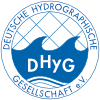HN Ausgaben wählen
- HN 132 (9)
- HN 131 (17)
- HN 130 (10)
- HN 129 (8)
- HN 128 (10)
- HN 127 (6)
- HN 126 (10)
- HN 125 (11)
- HN 124 (8)
- HN 123 (10)
- HN 122 (9)
- HN 121 (10)
- HN 120 (7)
- HN 119 (10)
- HN 118 (7)
- HN 117 (10)
- HN 116 (14)
- HN 115 (10)
- HN 114 (6)
- HN 113 (10)
- HN 112 (7)
- HN 111 (9)
- HN 110 (9)
- HN 109 (11)
- HN 108 (8)
- HN 107 (9)
- HN 106 (7)
- HN 105 (14)
- HN 104 (6)
- HN 103 (11)
- HN 102 (8)
- HN 101 (9)
- HN 100 (13)
- HN 097 (1)
Digitalisierung auf allen Meeren
Umfassende Aufgaben für die neue BSH-Chefin
Seit November 2018 hat das Bundesamt für Seeschifffahrt und Hydrographie (BSH) in Hamburg und Rostock eine neue Präsidentin. Die Juristin Dr. Karin Kammann-Klipp¬stein hat die Aufgabe, den Übergang in die hochautomatisierte Schifffahrt in die Wege zu leiten. Um dieses Ziel zu erreichen, gibt es viel zu tun: Weltweit einheitliche Standards zu schaffen, damit die neuen hydrographischen Informationen verwertet werden können. Damit soll eine optimierte Routenplanung möglich sein. Ein wichtiger Beitrag zum Meeresumweltschutz.
BSH | Digitalisierung | Automatisierung | autonome Schifffahrt | Standardisierung | Meeresumweltschutz | Offshore-Windenergie | ImoNAV | ATAIR | LNG-Antrieb | GtL-Treibstoff
- Ausgabe: HN 113, Seite 56–58
- DOI: 10.23784/HN113-10
- Autor/en: Katrin Benner
Aus der Ferne in die Tiefe
Kartierung der Schleswig-Holsteinischen Ostsee durch Satellitendatenanalysen
Die Meeresbodensedimente und Substrate der Küstengewässer müssen alle sechs Jahre überwacht und der Zustand von Fauna, Flora und Habitaten muss bewertet werden. Zudem wird alle drei Jahre untersucht, welche Lebensräume wie besiedelt sind. Für die Seegrundkartierung, für die Quantifizierung der Habitattypen und für das marine Monitoring der Flachwasserbereiche werden heute Satellitendaten ausgewertet. Dadurch ist es möglich, eine flächenhafte Kartierung in vergleichsweise kurzer Zeit und kostengünstig durchzuführen.
Habitatkartierung | Seegrundkartierung | Seegrundklassifikation | Satellitendatenanalyse | Seegrundhabitat
- Ausgabe: HN 113, Seite 52–55
- DOI: 10.23784/HN113-09
- Autor/en: Knut Hartmann, Kim Knauer, Andreas Müller, Hans-Christian Reimers
High-resolution 3D sub-bottom profiling
Principles and case study
With sub-bottom profilers it is possible to investigate the subseafloor. However, common sub-bottom profilers are only providing two-dimensional depth slices of the subseafloor, that are difficult to interpret and that cannot display the complex three-dimensional reality of the subseafloor. Therefore there is a high demand for systems, capable of mapping the sediment three-dimensionally. The article describes what is possible with the SES-2000 sixpack from Innomar.
sub-bottom profiler | subseafloor | parametric effect | penetration depth | resolving capacity
- Ausgabe: HN 113, Seite 49–51
- DOI: 10.23784/HN113-08
- Autor/en: Fritjof Basan
Reconstruction and visualisation of historic underwater objects at the example of S.S. Terra Nova
This article deals with the reconstruction and visualisation of the former expedition ship S.S. Terra Nova. A data set consisting of historic photographs and a construction plan of the S.S. Terra Nova is used for the reconstruction. Bathymetry data recorded during a research cruise in 2017 show the wreck of the vessel. The vessel is reconstructed in its original state by employing different modelling approaches. Besides CAD-modelling also the Structure-from-Motion technique is used. By digitising the information of the construction plan the CAD-model is created. The historical photographs are combined in the Structure-from-Motion process and enable the processing of a point cloud of the vessel. An overlay of the resulting models and the bathymetry data is an important part of this article. This overlay is carried out in terms of the identification of the wreck and to examine the usability of the models. Subsequently the models as well as the wreck are visualised in different ways. A categorisation of the visualisations for different user groups is part of the discussion at the end of this article.
bathymetry | reconstruction | visualisation | wreck | Terra Nova | Structure-from-Motion | CAD modelling
- Ausgabe: HN 113, Seite 44–48
- DOI: 10.23784/HN113-07
- Autor/en: Friederike Täuber
»Ein Leben ohne Hydrographie wäre möglich, aber sinnlos«
Holger Rahlf leitet die Abteilung »Wasserbau im Küstenbereich« der Bundesanstalt für Wasserbau (BAW) am Standort Hamburg. Im Interview berichtet der studierte Bauingenieur, an welchen Forschungsfragen die BAW zur Zeit arbeitet. Außerdem erläutert er, wozu numerische Simulationsmodelle genutzt werden und weshalb Hydrographen dennoch weiterhin den Ist-Zustand in der Natur erfassen müssen. Und er verrät, wie die Küsten mit technisch-biologischen Ufersicherungen grüner werden könnten.
BAW | Ressortforschung | Meeresspiegelanstieg | numerische Modelle | Umweltverträglichkeitsprüfung
- Ausgabe: HN 113, Seite 38–43
- DOI: 10.23784/HN113-06
- Autor/en: Holger Rahlf, Lars Schiller


